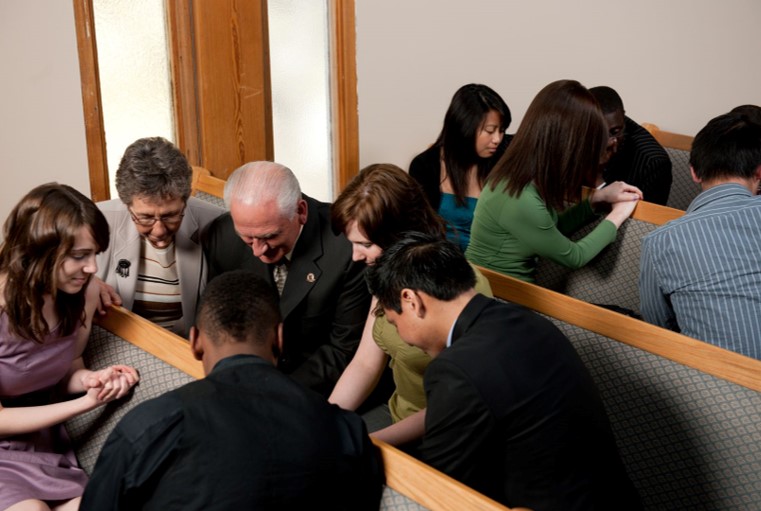Institutional churches are organizations, not living organisms. Similar to Roman Catholicism; the emphasis is on buildings, hierarchy, polity, preserving traditions, and control. Typically there are key families, individuals, deacons, elders, or a preacher who functions as the “owner.” The goal is to maintain the institution’s place in the community, not advance God’s kingdom.
Vital connection with God and meaningful interconnection with fellow members is foreign in an institutional church. Everything hinges on public services which are normally about as interesting and creative as the “mass”! Week after week they sing the same songs, make the same announcements, cover the same themes, extend obligatory handshakes, and exchange plastic smiles. This happens every Sunday with little personal interaction throughout the week. Why? Because it’s all about the institution.
Very few members of institutional churches have adult children who still attend with them. Life attracts, but death attracts no one. Consequently, generations were lost while efforts were made to keep the institution operating.
Institutional churches don’t select pastors based on strong leadership skills. To the contrary, they select those with weak skills because they don’t want a strong leader. They want someone to “wait on the congregation” rather than lead it.
Institutional churches are ingrown. It’s about self-justification. “Our” programs, “our” reputation, “our” church… There may be much talk about foreign missions, but few local conversions occur. Most of the numerical growth is from people transferring their membership. Why? Because the institution is central, not Christ and His commission.
An institutional organization bears zero resemblance to the church in the book of Acts. The early church was first and foremost a FELLOWSHIP. Those who gathered were of “one heart and one soul” (Acts 4:32). Think about that description—ONE HEART AND ONE SOUL. In the white heat of God’s presence their hearts were knit together as a body. They prayed together, wept together, worshipped together, witnessed together, ate together, suffered together, served together, and lived and died together.
God’s supernatural presence brought supernatural unity amid incredible diversity. People from all races, cultures, and backgrounds were integrated and baptized in an ocean of love. They were not out to build an institution, much less a movement. The LIFE of God animated the early church. The sense of strong community had drawing power. Conversions occurred daily. Sure they had problems, but they were problems associated with LIFE rather than decay. They had not “turned in” on themselves like a washing machine when the lid is closed—all kinds of commotion inside with no impact outside. Ingrown churches make no impact on the surrounding neighborhood, but God-saturated assemblies shake things up.
The New Testament contains 22 “one another” commands. Pray for one another. Exhort one another. Forgive one another. Bear one another’s burdens. All these “one another” directives were a move toward relationships, and away from rituals. The strength of a knitted garment lies in its great number of close ties. Healthy churches consists of redeemed saints who are “knit together” in the Spirit (Col. 2:19). “Close ties” in a fellowship is what makes it strong. That’s why relational churches with common purpose and experience amalgamate people from assorted backgrounds. Institutional churches find comfort in cultural similarity. They only attract people like themselves.
Thousands of institutional churches will close in the next two decades. Some churches will experience revitalization. And new life-giving churches will form.
If God does not attend a church, why should anyone else? The crying need in churches is LIFE! The life of God “in” His people, and His life “within” His fellowship. Life breeds life. When a congregation is bound together in a “one heart and one soul” community, people will be saved. And members will be loved and encouraged.
I heard of a man who left $500,000 to a church to maintain their cemetery. He wanted his legacy dedicated to managing a graveyard. Why would anyone spend their lives maintaining an institution? Isn’t the prospect of building a “one heart and one soul” fellowship more appealing?
I’m looking for a resurgence of LIFE-giving churches. How about you?
Harold Vaughan

